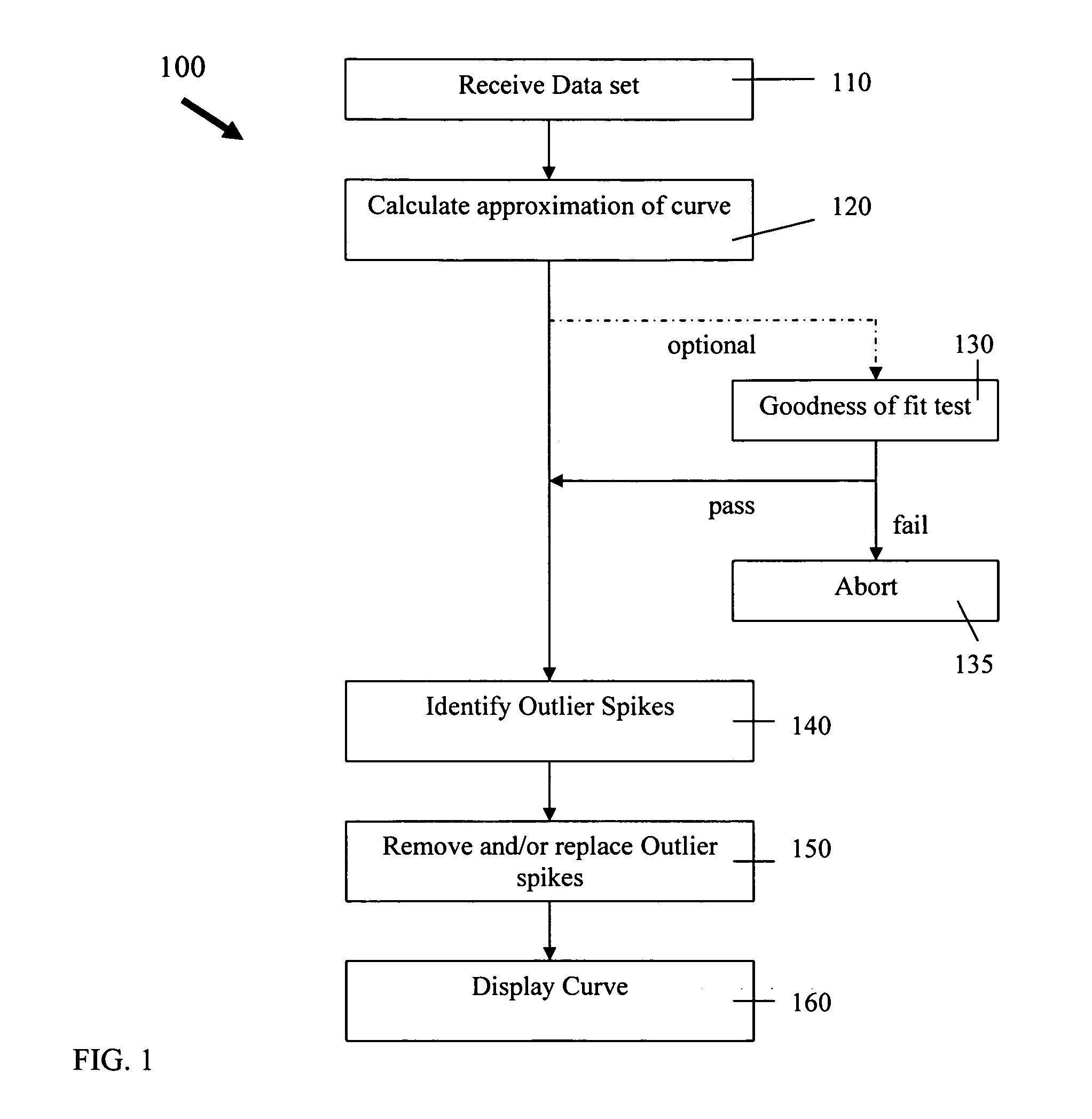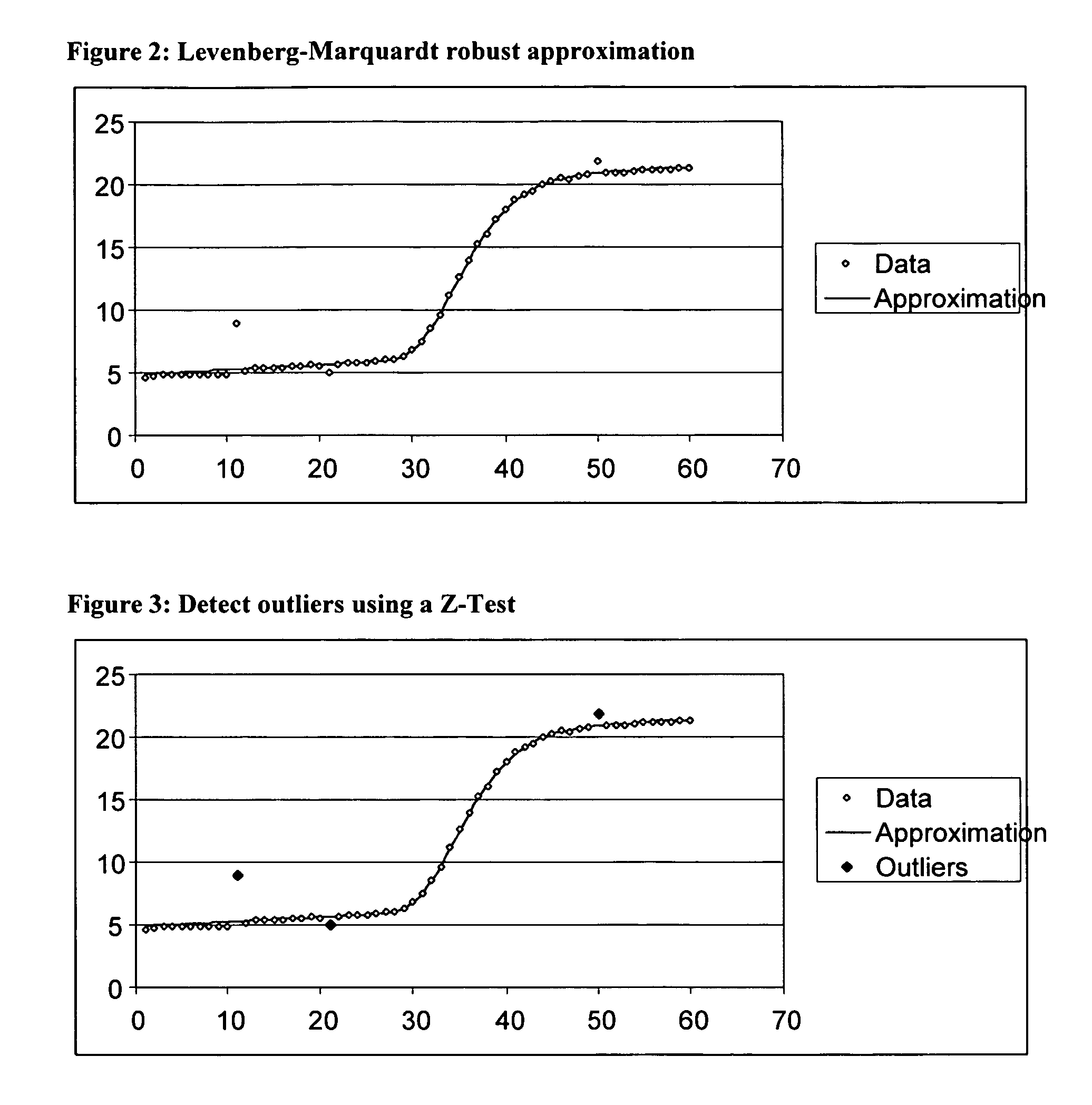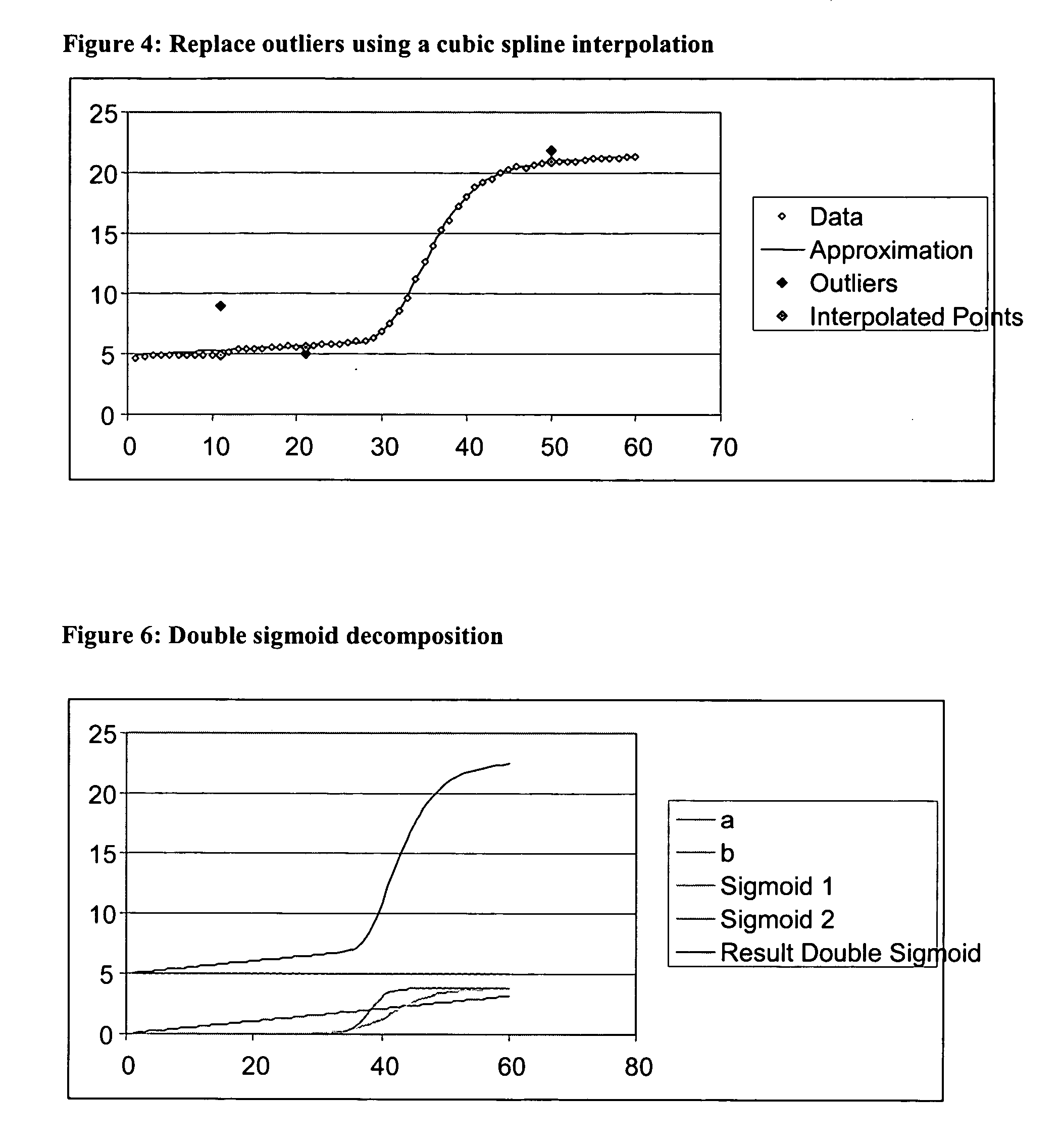Levenberg-Marquardt outlier spike removal method
a technology of levenberg and marquardt, applied in the field of systems and methods for processing data representing sigmoid type curves or growth curves, can solve the problems of poor ability to detect and correct spikes in other various situations, inability to correct early and late, and outlier spikes in growth curves. achieve the effect of robust estimation
- Summary
- Abstract
- Description
- Claims
- Application Information
AI Technical Summary
Benefits of technology
Problems solved by technology
Method used
Image
Examples
example
[0126]FIGS. 17 -19 illustrates aspects of the spike identification and removal process 100 of the present invention as applied to an example data set. FIG. 17a shows an example of a PCR growth curve data set, and FIG. 17b shows a plot of the original data set. FIG. 18a shows the PCR growth curve data set of FIG. 17 with identified outliers removed, and FIG. 18b shows a plot of the data set with identified outliers removed. FIG. 19a shows the PCR growth curve data set of FIG. 17 with identified outliers replaced with interpolated values, and FIG. 19b shows a plot of the data set with identified outliers replaced with interpolated values.
[0127] It should be appreciated that the spike identification and removal process 100, or portions thereof, may be implemented in computer code running on a processor of a computer system. The code includes instructions for controlling a processor to implement various aspects and steps of process 100. The code is typically stored on a hard disk, RAM ...
PUM
| Property | Measurement | Unit |
|---|---|---|
| distance | aaaaa | aaaaa |
| threshold value | aaaaa | aaaaa |
| threshold | aaaaa | aaaaa |
Abstract
Description
Claims
Application Information
 Login to View More
Login to View More - R&D
- Intellectual Property
- Life Sciences
- Materials
- Tech Scout
- Unparalleled Data Quality
- Higher Quality Content
- 60% Fewer Hallucinations
Browse by: Latest US Patents, China's latest patents, Technical Efficacy Thesaurus, Application Domain, Technology Topic, Popular Technical Reports.
© 2025 PatSnap. All rights reserved.Legal|Privacy policy|Modern Slavery Act Transparency Statement|Sitemap|About US| Contact US: help@patsnap.com



